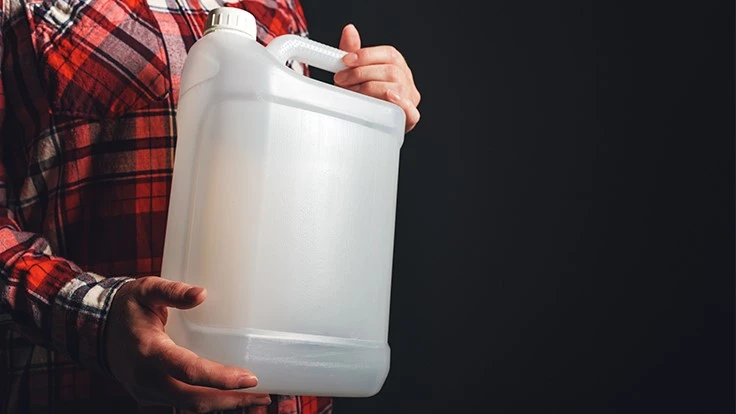
_fmt.png)
Glyphosate, a popular nonselective pre-emergent herbicide commonly known by the trade name Roundup, has been in the news lately due to several high-profile lawsuits. In August 2018, a jury in San Francisco ordered Roundup’s manufacturer, Monsanto, to pay $289 million in damages to a school groundskeeper who claimed the product caused his cancer. A judge upheld that decision, but reduced the payout to $78 million. Recently, another jury in San Francisco ruled against Monsanto, concluding that glyphosate was a substantial factor in causing the non-Hodgkin lymphoma in a Sonoma County man.
Bayer, the company that bought Monsanto in 2018, responded by saying there was more than four decades of extensive science and the conclusions of regulators worldwide that support the safety and non-carcinogenic nature of their glyphosate-based herbicide.
The International Agency for Research on Cancer (IARC) did list glyphosate as a probable human carcinogen (Group 2A) in 2015. But that puts it on the same level as burning wood, eating red meat, high-temperature frying or late-night work shifts — other Group 2A carcinogens.
In 2016, the Environmental Protection Agency’s office of pesticide programs released a report stating there was no evidence of a correlation between glyphosate exposure and the numerous cancer claims. In 2017, EPA released a draft statement that also concluded that glyphosate was not a likely carcinogen to humans.
The difference in the two opposing conclusions comes down to the dose, said Jeffrey Derr, professor of weed science at Virginia Tech University. Derr addressed glyphosate use in nursery/landscape situations in a June 24 webinar hosted by AmericanHort. In his article in the May/June edition of the “Virginia Turfgrass Journal,” Derr said the IARC did not consider dose in their analysis, while the EPA did consider it to be relevant to the interpretation of data.
Christine Olinger of the EPA’s Office of Pesticide Programs also took part in the webinar to answer question about the EPA research. She said she saw some tumors in animals dosed high above the recommended levels.
Scott Senseman, head of the University of Tennesee’s Department of Plant Sciences, is the past-president of the Weed Science Society of America. In that role, he has drafted a statement on glyphosate cancer risk. However, the challenge is how to communicate science to non-scientists.
“We’re in a society that is made up of a lot of kinds of individuals,” he said. “Trying to come up with a statement that encompasses all of those is a tall challenge.”
In the June 24 webinar, Senseman said the WSSA Committee on Glyphosate Cancer Risk had also drafted a symposium proposal. The symposium would assist green industry professionals with interpreting results from long-term exposure studies, explaining the methodology used to assess toxicological risk, as well as looking at the situation from an attorney’s perspective.
Derr suggested a few alternatives to glyphosate-based herbicides.
“There’s no easy replacement for glyphosate,” he said. “There’s not one particular product that can do everything.”
Glufosinate is the top alternative he recommended. It’s a contact herbicide with some systemic action, available in the trade as Finale, Cheetah Pro and others. It offers activity within one to four days and is used at a rate of 2-4 quarts per acre. It carries a “Warning” signal word. Glufosinate is better than contact herbicides on perennial weeds, but somewhat less effective than glyphosate on them. It provides good control of cutleaf evening primrose, doveweed, dayflower and white clover. Derr cautions growers and other green industry professionals to keep glufosinate off the bark of young trees.
If you need weed control and you don’t want to wait one to four days, Derr said that diquat is an excellent option. This is the most effective contact herbicide alternative to glyphosate, he said. In fact, it’s the contact part of the popular, effective Roundup QuikPro product (which is glyphosate + diquat).
“On a warm, sunny day, if you treat an area in the morning you’ll see results by that afternoon,” he said.
Diquat carries a “Caution” signal word and is used at a rate of 1-2 pints per acre.

Explore the September 2019 Issue
Check out more from this issue and find your next story to read.
Latest from Greenhouse Management
- Anthura acquires Bromelia assets from Corn. Bak in Netherlands
- Top 10 stories for National Poinsettia Day
- Langendoen Mechanical hosts open house to showcase new greenhouse build
- Conor Foy joins EHR's national sales team
- Pantone announces its 2026 Color of the Year
- Syngenta granted federal registration for Trefinti nematicide/fungicide in ornamental market
- A legacy of influence
- HILA 2025 video highlights: John Gaydos of Proven Winners





